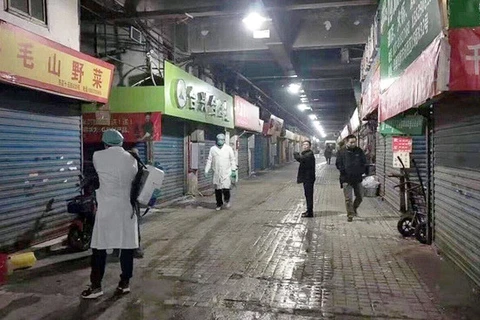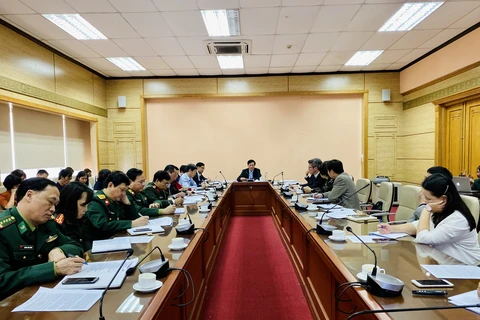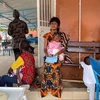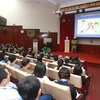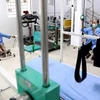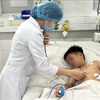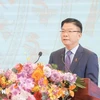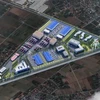 The Ministry of Health holds an urgent meeting on January 15 discussing measures to cope with the disease and deal with if any infections (Photo: VNA)
The Ministry of Health holds an urgent meeting on January 15 discussing measures to cope with the disease and deal with if any infections (Photo: VNA) Hanoi (VNA) - Deputy Prime Minister Vu Duc Dam has ordered ministries and relevant agencies to take drastic measures to prevent acute pneumonia, caused by a novel coronavirus (nCoV), from spreading into Vietnam.
In a document issued by the Government Office on January 16, Deputy PM Dam told the agencies to closely monitor the development of the disease in China and strengthen medical quarantine at border gates, airports and seaports.
The Deputy PM assigned the Ministry of Health to urgently issue an action plan to respond to the disease following current regulations and recommendations of the World Health Organisation (WHO).
The ministry had to ensure sufficient facilities and medical materials, as well as make sure staff is properly trained, he added.
The Ministry of Information and Communications was required to cooperate with the Ministry of Health to provide timely and accurate information on the disease’s developments.
According to the WHO, cases of acute pneumonia caused by nCoV were reported in Wuhan city of China’s Hubei province. The first patient developed symptoms on December 12, 2019. The number of cases reached 59 as of January 15.
The first death from the virus occurred in Wuhan on January 9. The second person, a 69-year-old man, died on January 16 in Wuhan.
Two other cases have been detected in Thailand and Japan with health authorities in both countries saying the patients had visited Wuhan prior to their hospitalisation.
The Vietnamese health sector is prompting actions to prevent the acute pneumonia caused by a novel coronavirus (nCoV) from entering the country and gear up to deal with it if infections are reported.
The Ministry of Health (MoH)’s steering committee for the prevention and control of dangerous and emerging diseases held an urgent meeting in Hanoi on January 15 to discuss measures to cope with this disease.
The MoH’s General Department of Preventive Medicine said on January 14, the infectious disease monitoring system found two Chinese nationals from Wuhan city to show fever symptoms at Da Nang International Airport. The two have been isolated and placed under close monitoring. Samples from them have been sent to the Pasteur Institute in Nha Trang city for testing.
Pending testing results, the Health Department of Da Nang city has implemented strict measures to prevent infection at local medical establishments. The MoH has sent a working group to the central city to step up disease prevention and control activities, the general department said.
According to the World Health Organisation (WHO), cases of acute pneumonia caused by nCoV were reported in Wuhan city of China’s Hubei province. The first patient developed symptoms on December 12, 2019, and the number of cases reached 59 as of January 15, including seven severe cases, one death, two fully recovered, and others in stable condition. There is no clear evidence of human-to-human transmission.
Deputy Minister of Health Nguyen Xuan Tuyen said Vietnam hasn’t recorded any cases of infection. However, the entry of this disease into the country is completely possible since Vietnam has constant trading and tourism activities with China.
In January and February, the MoH will send more working groups to examine disease prevention and control at hospitals and localities bordering China. It has also ordered localities to take active measures to prevent the disease and stay ready to handle and treat infection cases if there are any.
The ministry will also keep close coordination with the WHO to update people on the latest information about this disease, Tuyen added.
Coronaviruses are a family of viruses that cause illness in the upper respiratory and gastrointestinal tract of humans and some animals. They can spread through direct contact with respiratory secretions of patients.
In humans, coronaviruses cause illnesses in winter and early spring, ranging from the common cold to more severe diseases like Middle East Respiratory Syndrome (MERS-CoV) and Severe Acute Respiratory Syndrome (SARS-CoV). A novel coronavirus is a new strain that has not been previously identified in humans./.
